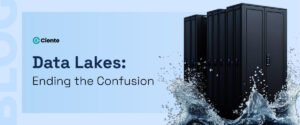Companies are rapidly adopting digitization, storing and exchanging critical data on cloud networks. How can you protect the information so they don’t land in the wrong hands?
While digitization is revolutionizing business operations, it raises concerns about data breaches. As per a report by Cybersecurity Ventures, the cost of cybercrime is estimated to reach $10.5 trillion by 2025. A single breach can lead to legal liabilities, fines, lawsuits, reputational damage, and more. To safeguard your brand from these risks, you must implement a foolproof security system.
PAM (Privileged Access Management) solutions offer cybersecurity strategies and technologies that prevent attacks. Small and big businesses need this solution to secure critical information and control access to such data. They provide control over access and permissions for identities, users, accounts, processes, and systems. With PAM, you can implement right-size privileged access controls and prevent or neutralize the risks from external and internal threats.
It protects sensitive data through authentication and authorization. You can access different types of solutions, from ones requiring basic password setups to those having complex multi-factor authentication and authorization. The ideal PAM for your brand will help you minimize the risk of security breaches and ensure that the network is accessible to the right users only.
Legacy PAM: An Overview
The traditional tool was introduced to manage access to on-premises IT assets. Legacy PAM would store credentials to shared accounts in a password vault, followed by rotating and randomizing passwords for access control. Its main objective was to gain controlled access to a fixed, on-premises network environment. However, it offers limitations in terms of scalability, integration with the cloud, and a lack of agility.
Each of these is essential in today’s dynamic IT world. Organizations now preferably opt for numerous platforms to implement cloud security services. This transition results in a fragmented access management process, giving rise to inherent inconsistency.
Traditional PAM’s Downfall
Since cloud environments are expanding, legacy PAM solutions are no longer fulfilling the complexity of data sets. According to Gartner, by 2025, 51% of IT spending will shift from traditional solutions to the public cloud. There is a reason for this preference.
The traditional solutions are unable to support large-scale cloud transformation initiatives. Whereas, a modern PAM approach works best, offering automated access controls. As we progress into cloud networks, businesses need to be redefined to protect access to the cloud and workloads within them. However, a lift and shift approach for this transition from Legacy to Cloud is not advisable, as it is neither secure nor scalable. Rather, you will need a cloud-ready framework to secure all data and inhibit identity thefts, the leading cause of data breaches. In contrast to the legacy PAM, a modern cloud-native solution offers the inherent benefits of unparalleled scalability, high availability, ease of use, and less cost of ownership.
Let’s dive into more details about this.
Why Migrate PAM to the Cloud?
PAM technology offers unparalleled control over privileged user activity, preventing unauthorized access and threats. Yet, traditional solutions are increasingly complex and expensive, making their adoption difficult. According to the Keeper Survey, over half of the organizations with on-premises solutions reveal that it prevents them from reaching goals.
When you move PAM to the Cloud, you tap into the potential of a dynamic security solution. You no longer need to keep passwords and credentials in an on-premise vault.
Properly configured and managed, the modern solution keeps sensitive assets secure. It only allows users to access the systems and information that they need. Cloud systems protect your data with automatically rotated passwords or multi-layer authentication. With these transformations, you can easily track anyone who attempts to access your information. Considering the several plus points of cloud security, it makes sense to integrate with a cloud PAM solution. Modern systems move the focus from network to identity perimeter. The user identity is given priority over network location in granting and managing access.
The shift to Cloud systems enables enhanced security in distributed networks, integrating ease and automating control over access rights in complex cloud ecosystems. Considering the several plus points of cloud security, it makes sense to integrate with a cloud PAM.
Benefits
When you shift PAM to the Cloud, it becomes more flexible, offering various benefits. Let’s dive into an in-depth understanding of these.
Compatible with Cloud
A modern solution reduces complexities and risks through cloud-native security controls. As your business expands, you might have new projects in the private cloud. A cloud-ready platform makes it easier to centralize policy management and implement strict access controls. It offers the necessary integrations with leading IT service management software to protect your resources.
Seamless Experience
Cloud PAM provides better speed and accuracy for providing access to specific users with just enough privileges. With quick deployment and automated updates, the modern SaaS-delivered PAM solutions provide a secure identity platform across all applications.
Improved Operational Efficiency
Cloud networks operate across a large scale, which makes it highly challenging. Moreover, managing the access lifecycle, defining access policies, and auditing privileged access becomes complicated in a multi-cloud environment. These complexities may introduce gaps in data security, which is why new and improved PAM is needed. Cloud-integrated PAM allows you to centralize access control policy administration and provide users with a single UI to access all managed resources.
Improved Identity Assurance at all Touchpoints
Multi-factor authentication helps you verify who is approaching your data access. Legacy approaches to MFA require manual care and they lack efficacy. Such a static method fails to measure the risk accurately. Cloud PAM, on the other hand, supports risk-based MFA by applying machine learning algorithms and behavioral analytics.
Security & Compliance in the Cloud
When you invest in a modern PAM solution, you experience a more proactive identity management. It consistently implements access policies to avoid security gaps. With a comprehensive modern system, you can control the user’s access to critical data, servers, and applications. You can also set up end-to-end monitoring and reporting to identify abuse of privilege, and amp up cybersecurity with cloud-based solutions.
To put it concisely Since digital transformation is becoming dominant in the world of B2B business, data violation is a threat you need to watch out for. A minor breach can have lasting consequences and probably a domino effect. The best approach would be to prevent the risk altogether and you can accomplish this by implementing a privileged access management system. This allows you to exercise controlled access to your database. What’s more- it is quick to detect any threats and prompt at acting on them. Although it began with the traditional solution, it’s just not compatible with the extensive cloud networks. The evolving dynamics require a cloud-based system, which is what most businesses prefer now. It’s far less cumbersome and much more organized than Legacy PAM.





